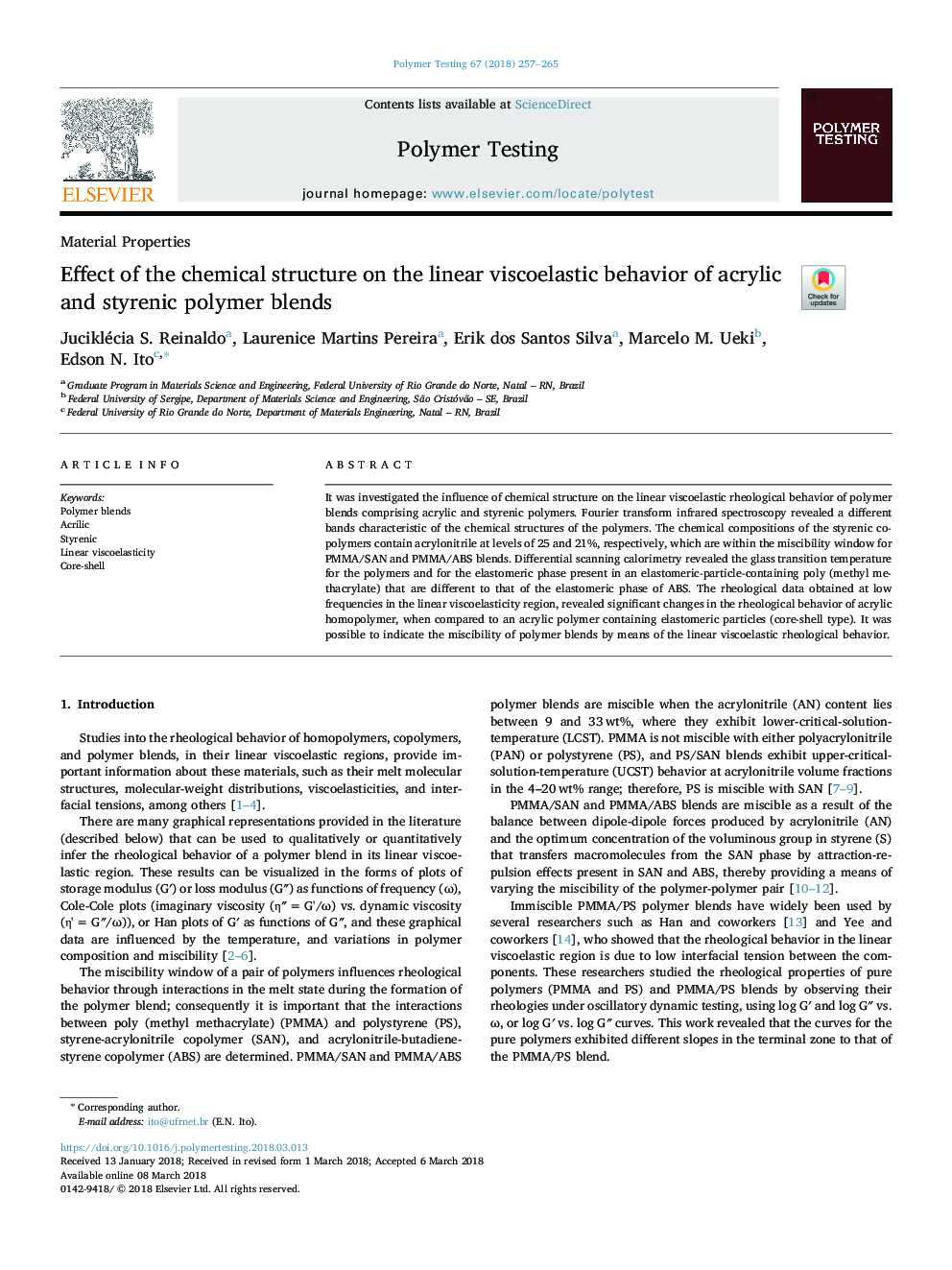| Article ID | Journal | Published Year | Pages | File Type |
|---|---|---|---|---|
| 7825099 | Polymer Testing | 2018 | 9 Pages |
Abstract
It was investigated the influence of chemical structure on the linear viscoelastic rheological behavior of polymer blends comprising acrylic and styrenic polymers. Fourier transform infrared spectroscopy revealed a different bands characteristic of the chemical structures of the polymers. The chemical compositions of the styrenic copolymers contain acrylonitrile at levels of 25 and 21%, respectively, which are within the miscibility window for PMMA/SAN and PMMA/ABS blends. Differential scanning calorimetry revealed the glass transition temperature for the polymers and for the elastomeric phase present in an elastomeric-particle-containing poly (methyl methacrylate) that are different to that of the elastomeric phase of ABS. The rheological data obtained at low frequencies in the linear viscoelasticity region, revealed significant changes in the rheological behavior of acrylic homopolymer, when compared to an acrylic polymer containing elastomeric particles (core-shell type). It was possible to indicate the miscibility of polymer blends by means of the linear viscoelastic rheological behavior.
Related Topics
Physical Sciences and Engineering
Chemistry
Organic Chemistry
Authors
Juciklécia S. Reinaldo, Laurenice Martins Pereira, Erik dos Santos Silva, Marcelo M. Ueki, Edson N. Ito,
